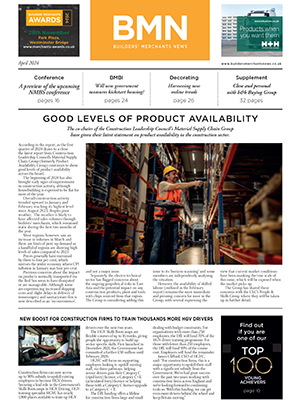BOSTON: Dedication to meeting environmental and legislative compliance is a crucial role for any supplier, importer or reseller of timber and many other products. This dedication will be a test for many with the upcoming changes to CE marking for timber products that become a legal requirement from 1 July 2013.
Although the deadline seems some time off, the implications of non-compliance could be considerable, resulting in legal action against parties throughout the supply chain. CE marking under the new CPR requirements means stricter controls and importantly the ability to provide conformity information on products being sold in the construction sector. So preparation in readiness for 1 July 2013 is crucial.
“There is much being written about the change from CPD to CPR under CE Marking, and indeed there is much to understand from a manufacturer, supplier and reseller perspective. There is a long and sometimes confusing list of product compliance information, be it structural or non-structural and the product groups covered by CE marking relating to timber as well as other product groups. We already have many timber products being supplied as CE marked, from plywoods, both structural and non-structural, to i-joists and other engineered wood products such as our Kerto LVL,” says Darren Pack, head of UK merchant sales for Metsä Wood.
“But it is the change from CPD to CPR that has the biggest impact on all in the supply chain and what needs to be implemented in readiness for July next year.”
From 1 July 2013, the Construction Products Regulation (CPR) will replace the Construction Products Directive (CPD). This will make CE marking compulsory for many construction products in Europe, where a harmonised standard exists. The CPR applies to any product placed on the European market, which is produced for permanent incorporation in construction works, including both buildings and civil engineering works, whether they are structural or not, and which is subject to a harmonised standard. CPR’s main objective with CE marking is to ensure that construction products are safe by considering performance levels, ensuring the products are fit for purpose. In simple terms, depending on the product, certain levels of information need to be readily available to prove a product’s compliance.
All in the supply chain: manufacturers, importers and resellers will need to ensure that they can provide this supporting test data information. The information requirements vary depending on the demands of the product. Under CPR various information is required to be supplied and held based on the performance level of the product in question. The performance level of a product is categorised as the Attestation Level of Conformity (AoC). For the lowest level of conformity, Level 4, this can simply be the CE Declaration of Performance and full CE mark, whereas on the highest level timber products (Level 1) further documents are required to prove compliance, being the Initial Type Test certificates and Factory Production Control certificates.
Responsibility for transparency of information lies throughout the entire supply chain. CE marking will be policed by Trading Standards in the UK and non-compliance could result in steps that prohibit, restrict or even withdraw the product from the market. The worse case scenario could even see a jail sentence. It is therefore paramount that each stage of the supply chain not only understands the changes to the regulations but also ensures that, from July 2013, these regulations are complied with.
“Our dedication to compliance at all levels is clear,” continues Darren Pack, “And the new CE compliance under the CPR is no exception. We have a team dedicated to ensuring we are compliant, both in our own systems and working with our suppliers. Recognising how challenging and in some cases daunting the prospect of compliance could be, we are keen to help our customers through the process, bringing our experiences forward and also answering many questions we had when we started our preparations. As such we are actively supporting customers in understanding the CE marking regulations and supporting steps to implementation, including information provision and availability, implications on product labelling, invoicing and delivery notes.”






